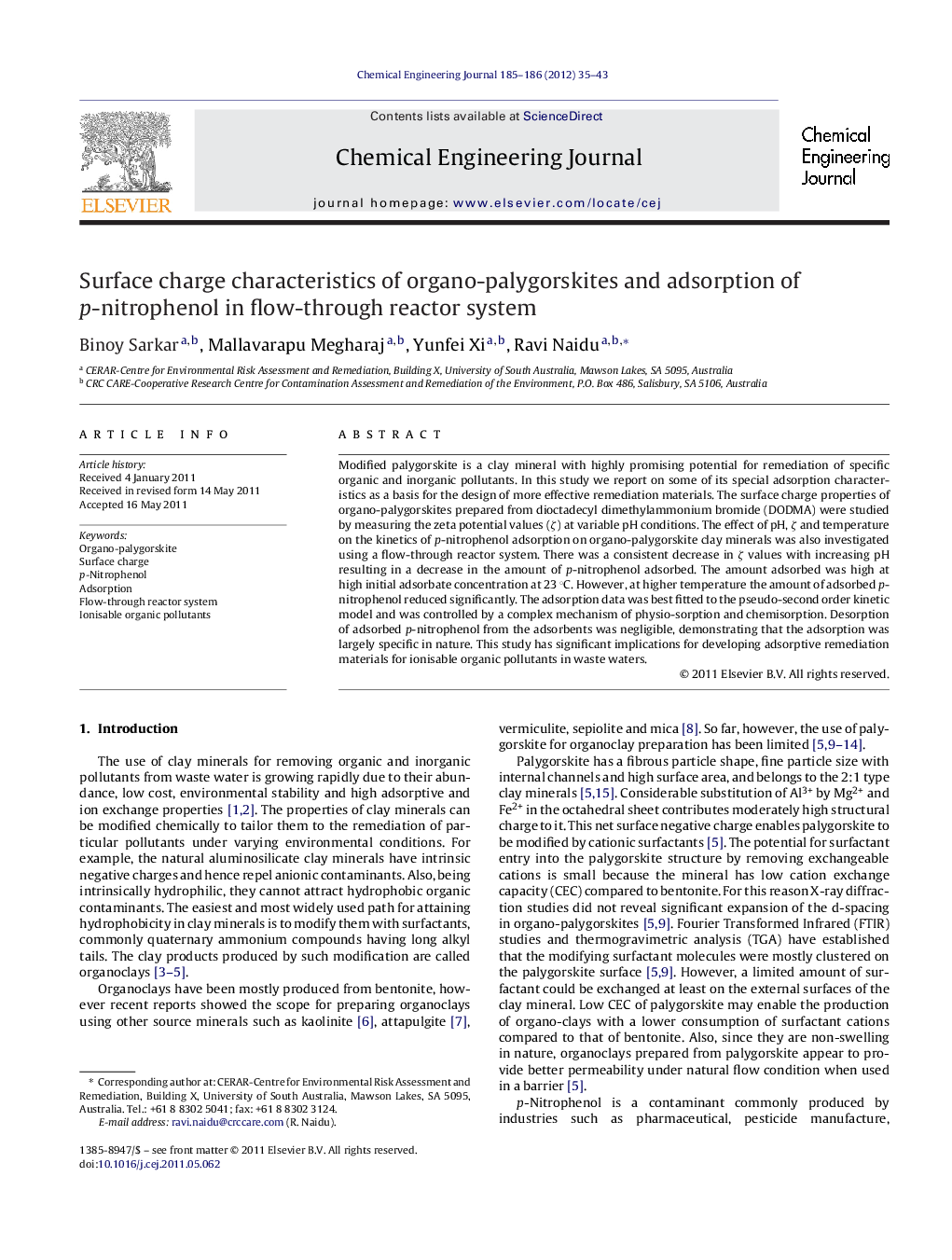| Article ID | Journal | Published Year | Pages | File Type |
|---|---|---|---|---|
| 150132 | Chemical Engineering Journal | 2012 | 9 Pages |
Modified palygorskite is a clay mineral with highly promising potential for remediation of specific organic and inorganic pollutants. In this study we report on some of its special adsorption characteristics as a basis for the design of more effective remediation materials. The surface charge properties of organo-palygorskites prepared from dioctadecyl dimethylammonium bromide (DODMA) were studied by measuring the zeta potential values (ζ) at variable pH conditions. The effect of pH, ζ and temperature on the kinetics of p-nitrophenol adsorption on organo-palygorskite clay minerals was also investigated using a flow-through reactor system. There was a consistent decrease in ζ values with increasing pH resulting in a decrease in the amount of p-nitrophenol adsorbed. The amount adsorbed was high at high initial adsorbate concentration at 23 °C. However, at higher temperature the amount of adsorbed p-nitrophenol reduced significantly. The adsorption data was best fitted to the pseudo-second order kinetic model and was controlled by a complex mechanism of physio-sorption and chemisorption. Desorption of adsorbed p-nitrophenol from the adsorbents was negligible, demonstrating that the adsorption was largely specific in nature. This study has significant implications for developing adsorptive remediation materials for ionisable organic pollutants in waste waters.
► Organo-palygorskites can produce positive surface charge. ► At changing pH a constant potential is maintained. ► Adsorption of contaminant anions in flow-through reactor decreases at higher pH. ► Both physio-sorption and chemisorptions take place. ► Desorption is negligible.
